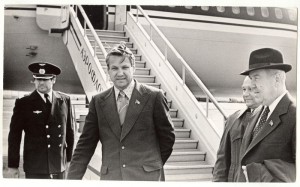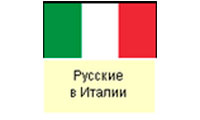Russian National Awakening in the Baltic provinces
The abolition of serfdom (1861), the introduction of reforms in Russia and the celebration of the millennium of the Russian State launched the awakening of national consciousness among the Russians in the Baltic provinces, most of all in Riga. Different Russian associations emerged there – the St.Nicholas Merchants’ Society, Association for the Assistance of Russian Salesmen, singing groups ‘Bayan’ and ‘Lado’, the ‘Uley’ (‘Beehive’) Society, the Russian Tradesmen’s Co-operative of Riga, the Third Riga Society of Mutual Credit, the Russian Literary Circle, the Russian Club. Russian-Orthodox brotherhoods are created as well. In 1868 the first Russian gymnasia (high school) was opened. In 1869 the first edition of the ‘Rizhski Vestnik’ (‘Riga News’) newspaper was issued. The Russian Theatre has been working in Riga since 1883.
In 1877 ordinary Russian municipal legislation was introduced in the Baltic provinces of the Empire. During the reign of Alexander III (1881 – 1894) the Baltic provinces finally lost their special autonomous status. Germanisation was replaced by Russification. Russian became the official language. Most education institutions converted to teaching in Russian.
The second half of the 19th Century was characterised by the rapid development of capitalism in Russia, including the Baltic provinces. Industrial production developed particularly intensively in Riga. Whereas in 1864 up to 90 industrial enterprises were working in Riga, 10 years later the number had risen to 141. The favourable geographical position of the Baltic provinces, their sea ports through which Russia’s intensive trading with the West was conveyed as well as the railways connecting the local enterprises with the Russian market and sources of raw material – all these factors attracted overseas capital. Alongside Riga, industry in Dinaburg (Dinaburg –1275-1893, Borisoglebsk – 1656-1667, Dvinsk –1893-1920, Daugavpils from 1920) and Libau (in Russian – Libava, Liepāja from 1918) also developed rapidly. For example, the industry of Libau (Liepāja) grew six-fold in terms of gross production over the period from 1881 to 1891. At the end of the 19th Century the population of Dvinsk (Daugavpils) increased by several thousand people every year, mainly as a result of migration from other regions of the Russian Empire. Migration of labour and a high birth rate led to the rapid growth of the Russian Community in Latvia.
Владислав Волков. Русские в Риге
И. Жогота. Русские купцы. - Покровское кладбище. Слава и забвение. – Рига, 2004
И. Жогота. Русские купеческие фамилии. – Покровское кладбище. Слава и забвение. – Рига, 2004
Антонина Заварина. Русское населени Латвии (К истории поселения)
Иван Заволоко. О старообрядцах г. Риги
Борис Инфантьев. Русские писатели о рижских и латгальских староверах
Владимир Никонов. Из истории Режицкой кладбищенской старообрядческой общины (1858–1940 гг.)





























